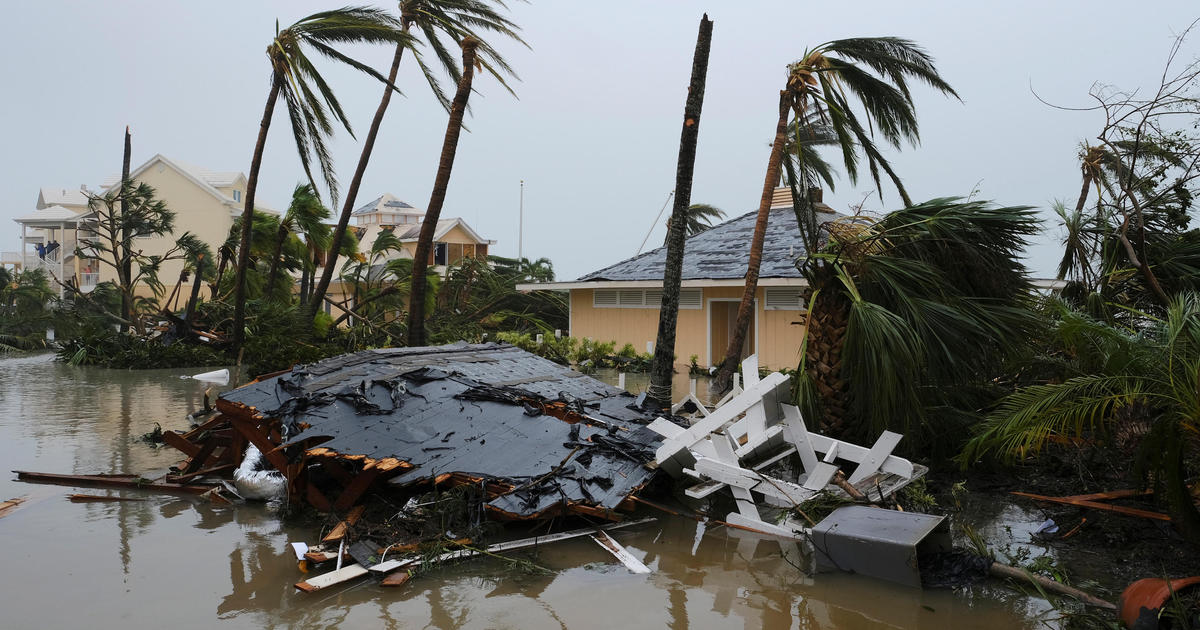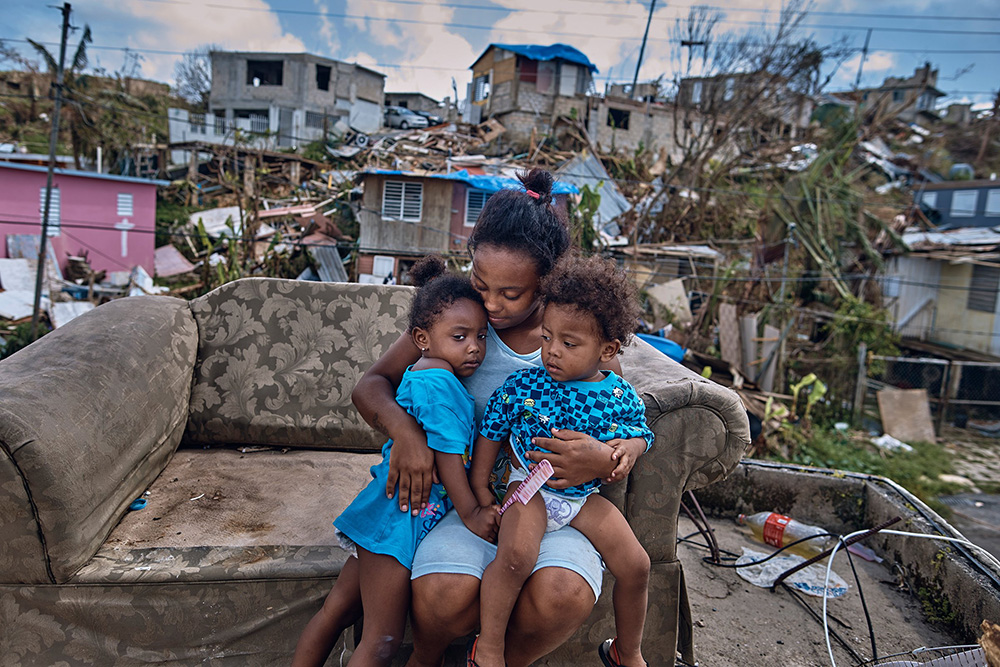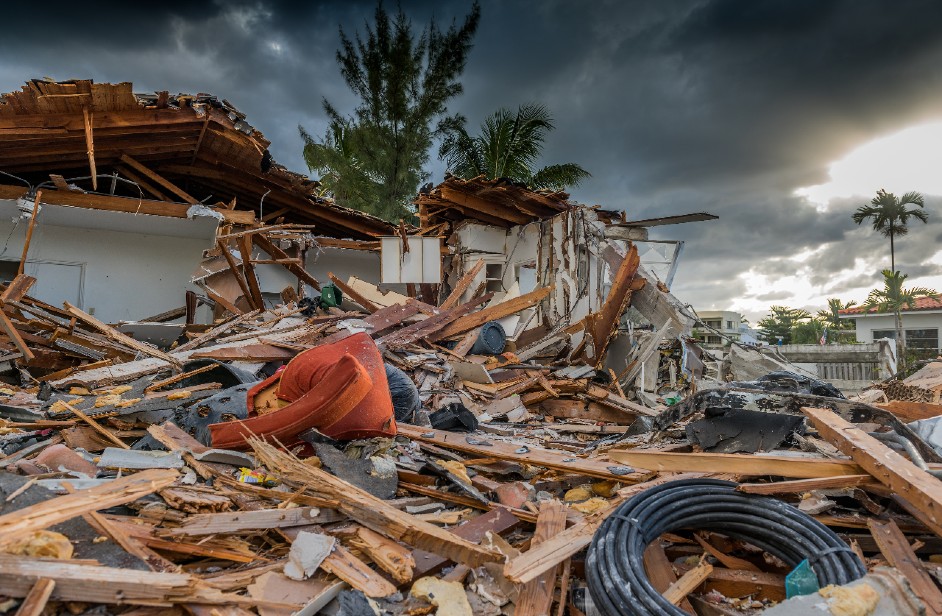Puerto rico hurricane season: Best and Worst Times to Visit Puerto Rico
Disaster Preparedness – Puerto Rico and the U.S. Virgin Islands
Though vulnerable to earthquakes, tsunamis, and wildfires, the major threat of disaster in Puerto Rico and the U.S. Virgin Islands comes from hurricanes, tropical storms, and drought. Hurricanes bring storm surge, heavy rainfall, flooding, landslides, extreme winds and tornadoes, and often cause extensive and catastrophic damage. Long term drought impacts crops and livestock, water supply, and increases the risk of wildfires.
Hurricanes and Tropical Storms
Puerto Rico and the U.S. Virgin Islands are still recovering from Hurricanes Irma, a category 5 storm that devastated the U.S. Virgin Islands and eastern areas of Puerto Rico on September 6, 2017, and Maria, a high end category 4 storm, which made landfall at Yabucoa in southeastern Puerto Rico on September 20, 2017. Hurricane Maria was the strongest storm to hit Puerto Rico since 1928.
Drought
From 2014 to 2016 Puerto Rico and the U. S. Virgin Islands experienced extreme drought that also impacted much of the wider Caribbean. 2015 was the third driest period in Puerto Rico. Strict water restrictions were enforced, businesses temporarily closed, and crops and livestock were lost.
S. Virgin Islands experienced extreme drought that also impacted much of the wider Caribbean. 2015 was the third driest period in Puerto Rico. Strict water restrictions were enforced, businesses temporarily closed, and crops and livestock were lost.
Trends and Outlook for 2019
With NOAA predicting a near-normal 2019 Atlantic hurricane season, and abnormally dry and moderate drought conditions affecting Puerto Rico, and abnormally dry drought conditions across the U.S. Virgin Islands (with lingering impacts from more intense drought earlier this year), being prepared for potential disasters can help improve the response, and also the recovery to such events.
The Fourth National Climate Assessment recently reported that “Extreme events pose significant risks to life, property, and economy in the Caribbean, and some extreme events, such as flooding and droughts, are projected to increase in frequency and intensity. Increasing hurricane intensity and associated rainfall rates will likely affect human health and well-being, economic development, conservation, and agricultural productivity. Increased resilience will depend on collaboration and integrated planning, preparation, and responses across the region.”
Increased resilience will depend on collaboration and integrated planning, preparation, and responses across the region.”
Below are the latest resources to help you prepare for disasters, guide your response, and also to help in the recovery process.
Disaster Preparedness | Response | Recovery | Mitigation:
- Asistencia por Desastres para Agricultores y Dueños de Fincas – CaribbeanClimateHub.gov
Asistencia en desastres para la agricultura y la ganadería, la conservación y las prácticas de mitigación en Puerto Rico y las Islas Vírgenes de los Estados Unidos. - Disaster Assistance for Farmers and Forest Landowners – ClimateHubs.oce.usda.gov
Disaster assistance for agriculture and livestock, conservation and mitigation practices in Puerto Rico and the U.S. Virgin Islands. - Disaster Assistance Programs – FSA.USDA.gov
Programs and services to help communities, farmers, ranchers, and businesses that have been hard hit by Hurricanes Irma, Harvey, Maria and other natural disaster events.
- Disaster Assistance Programs – FSA.USDA.gov
Local resources, recovery help, currently declared disasters. - Disaster Resource Center – USDA.gov
Information about specific disasters and emergencies, how to prepare, recover, and help build long-term resilience, as well as information about USDA assistance during disaster events. - Emergency Preparedness – FEMA.gov
Emergency Preparedness. Hurricane, Flood, Earthquake, Tsunami and Fire. - Emergency Preparedness – FSIS.USDA.gov
Preparing for a weather emergency and food safety. - Plan Ahead for Disasters – Ready.gov
Be informed, plan ahead, and take action. - Protecting Livestock During a Disaster – APHIS.USDA.gov
Emergency management resources for livestock. - Recover – Disaster Assistance Discovery Tool – Farmers.gov
Learn about USDA disaster assistance programs that might be right for you by completing five simple steps.
Recent Hurricanes in Puerto Rico
Hurricanes occur rarely in Puerto Rico. On average, they happen about once per year. The hardest hit regions are West and East.
The hurricane season usually lasts from early June to late November.
The most severe hurricane to make landfall in Puerto Rico in the past 12 months was »Fiona«. It reached a wind speed of up to 139 km/h on September 18, 2022 at 2:00 pm local time near Guánica and was 23 kilometers in diameter at the time. According to the internationally accepted Saffir-Simpson classification, this corresponded to a category 1 hurricane. On the open sea, speeds of up to 213 km/h were measured (category 4).
Other natural hazards in Puerto Rico:
› Tsunamis
› The most severe natural disasters worldwide
Back to overview: Puerto Rico
Current satellite image of the North Atlantic
Move the timeline below the image to see previous shots.
08.01.2023 © CIMSS University of Wisconsin-Madison
Most violent hurricanes in Puerto Rico since 2018
Nicole: November 5-11, 2022
Region:
Caribbean Sea
Wind speed:
max. 120 km/h
on land:
max. 28 km/h
Diameter:
max. 1482 km
Air pressure:
below 980 mbar
Saffir-Simpson scale:
category 1
Affected regions
West
Lisa: October 27 to November 5, 2022
Region:
Caribbean Sea
Wind speed:
max. 130 km/h
Diameter:
max. 370 km
Air pressure:
below 988 mbar
Saffir-Simpson scale:
category 1
The hurricane did not make direct landfall. On October 29th, 2022 at 5:00 pm it had the shortest distance at about 500 km southeast of Pole Ojea in West.
Ian: September 19 to October 2, 2022
Region:
Caribbean Sea
Wind speed:
max. 250 km/h
Diameter:
max. 1482 km
Air pressure:
below 937 mbar
Saffir-Simpson scale:
category 4
The hurricane did not make direct landfall. On September 23rd, 2022 at 5:00 am it had the shortest distance at about 484 km south of Pole Ojea in West.
On September 23rd, 2022 at 5:00 am it had the shortest distance at about 484 km south of Pole Ojea in West.
Fiona: September 12-24, 2022
Region:
Caribbean Sea
Wind speed:
max. 213 km/h
on land:
max. 139 km/h
Diameter:
max. 556 km
Eye:
max. 74 km
Air pressure:
below 932 mbar
Saffir-Simpson scale:
category 4
Affected regions
West
Earl: August 27 to September 10, 2022
Wind speed:
max. 167 km/h
Diameter:
max. 444 km
Air pressure:
below 954 mbar
Saffir-Simpson scale:
category 2
The hurricane did not make direct landfall. On September 4th, 2022 at 5:00 am it had the shortest distance at about 163 km northwest of Culebra in East.
Dorian: August 24 to September 5, 2019
Region:
Caribbean Sea
Wind speed:
max. 296 km/h
on land:
max. 130 km/h
Diameter:
max. 111 km
Eye:
max. 56 km
56 km
Air pressure:
below 910 mbar
Saffir-Simpson scale:
category 5
Affected regions
East
These evaluations are based on data from the National Centers for Environmental Information of the National Oceanic and Atmospheric Administration (NOAA). Individual data have been summarized or translated.
Hurricane Fiona causes heavy rainfall in Puerto Rico
Hurricane Fiona causes heavy rainfall in Puerto Rico
Tatyana Borisenko
News Editor
© Meteoprog
Rainstorms can lead to flooding and damage to infrastructure
Puerto Rico is facing heavy rainfall and flooding after Fiona became the third hurricane of the 2022 Atlantic season.
nine0003
A bulletin from the National Hurricane Center said heavy rainfall from Fiona could lead to life-threatening flash floods, landslides and urban flooding in Puerto Rico and the eastern Dominican Republic.
Weather elements and disasters
27 December 2022 20:02
Hours before Fiona made landfall in Puerto Rico, she turned into a hurricane. Accuweather reported that Fiona’s landfall occurred on September 18 off the coast of Puerto Rico, Punta Tocon.
nine0003
The National Hurricane Center said Fiona reached a top speed of 140 km/h on Sunday.
AccuWeather has rated Fiona Category 2 for the Caribbean, based on the AccuWeather RealImpactTM scale for hurricanes. In some places, heavy rains can reach 600 mm.
Fiona will generate wind gusts between 97 and 129 km/h that could spread to eastern and central Puerto Rico and the Dominican Republic. At the same time, 100-200 mm of rain is expected in parts of Hispaniola, with potential floods and landslides.
nine0003
In addition, the Virgin Islands, the United States, and the eastern Dominican Republic can expect Fiona on Monday, September 19th. Precipitation and gusty winds will also affect the southeastern Bahamas, Turks and Caicos Islands.
Fiona damaged power grids and Internet lines in Puerto Rico, leaving more than 500,000 residents offline on Sunday morning. Electricity transmission company LUMA Energy explained that a full restoration of power supply could take several days due to the damage to Fiona and the extent of the outage.
nine0003
- Today
- Tomorrow
- Tuesday
- Wednesday
-4 °
Vinnitsa
0 °
Lutsk
-9 °
Dnepr
-11 °
Donetsk
-4 °
+6 °
9000 + 8°
Ternopol
-9 °
Kharkov
-4 °
Kherson
-2 °
Khmelnitsky
-7 °
Cherkasy
-8 ° 9000
Chernnigov 9000. Chernivtsi
Chernivtsi
-5°…+1°
Vinnytsia
-2°…+1°
Vinnytsia
-5°…-1°
Vinnytsia
0°… +5°
Lutsk
+2°…+4°
Lutsk
-1°…+1°
Lutsk
-10°…-3°
Dnepr
-7°…-3°
Dnepr
-9°…-4°
Dnepr
-12°… -6°
Donetsk
-10°…-7°
Donetsk
-11°…-6°
Donetsk
-5°…+1°
Zhitomir
-3°…+1°
Zhytomyr
-5°…-2°
Zhytomyr
+5°…+9°
Uzhhorod
+5°…+7 °
Uzhhorod
+3°…+7°
Uzhhorod
-9°…-1°
Zaporizhia
-6°…-2°
Zaporizhzhia
-9°…-3°
Zaporizhzhia
3 –
…+5°
Ivano-Frankivsk
+1°…+4°
Ivano-Frankivsk
-3°… 0°
Ivano-Frankivsk
-7°… -2°
Kyiv
-5°…-1°
Kyiv
-7°… -3°
-3°
Kyiv
-8°… 0°
Kropivnitsky
– 5°… 0°
Kropyvnytsky
-8°…-3°
Kropyvnytsky
-4°…+4°
Sevastopol
-2°…+7°
Sevastopol
90.12 ..+8°
Sevastopol
-5°…+2°
Simferopol
-3°…+6°
Simferopol
-2°…+4°
Simferopol
-14°…-7°
Lugansk
-11°…-8°
Lugansk
-13°…-7°
Lugansk
+1°…+6°
Lviv
+2°…+5°
Lviv
+1°…+2°
Lviv
-5°…+ 2°
Nikolaev
-3°…+3°
Nikolaev
-4°…+1°
Nikolaev
-1°…+4°
Odessa
+ 2°…+5°
Odessa
-1°…+3°
Odessa
-10°…-4°
Poltava
-7°…-4°
Poltava
-10°…-4°
Poltava
-1°…+4°
Rivne
+1°…+4°
Rivne
-2°… 0°
Rivne
-11°. .-5°
.-5°
Sumy
-8°…-5°
Sumy
-11°…-6°
Sumy
-1°…+5°
Ternopil
+2°…+4°
Ternopil
-1°…+1°
Ternopil
-10°…-5°
Kharkiv
-9°…- 6°
Kharkiv
-12°…-6°
Kharkiv
-5°…+2°
Kherson
-2°…+3°
Kherson
-3°…+1°
Kherson
-3° …+4°
Khmelnytsky
0°…+3°
Khmelnytsky
-4°… 0°
Khmelnytsky
-7°…-1°
2 Cherkasy
-5°…-1°
Cherkasy
-7°…-3°
Cherkasy
-9°…-4°
Chernihiv
-6°…- 3°
Chernigov
-8°…-5°
Chernigov
0°…+7°
Chernivtsi
+1°…+4°
Chernivtsi
-3°.. 0°
Chernivtsi
Previous news
19 September 2022 18:11
Next news
19 September 2022 15:30
- meteoprog.net/thumbnails/newsweather/cropr_518x337/big_615467.jpg?1673167680″>
Igor Kibalchich
Synoptic
nine0003Weather in Ukraine for Holy Evening and Christmas 2023
Weather in Ukraine for tomorrow
January 5 13:20Igor Kibalchich
SynopticRecord heat wave in Ukraine and Europe January 1-2, 2023
Interesting weather facts
3 January 11:27Igor Kibalchich
SynopticReview of weather conditions in Ukraine for the week: January 2 – 8, 2023
Weather in Ukraine for tomorrow
1 January 20:40Igor Kibalchich
Synoptic
nine0003Weather in Ukraine for the New Year
Weather in Ukraine for tomorrow
30 December 2022 19:38
Overview of weather conditions in Ukraine for the week: January 9 – 15, 2023
Igor Kibalchich
Synoptic
Weather in Ukraine for tomorrow
8 January 10:48
Interesting weather facts
8 January 21:03
Interesting weather facts
8 January 20:04
Interesting weather facts
8 January 19:30
nine0003
VIDEO.
 “HEAVY” zodiac signs
“HEAVY” zodiac signsVIDEO. Severe storm hits California
VIDEO. Zodiac signs you can’t argue with
nine0032
Weather in other regions
Kyiv
-6°
Kharkiv
-9°
Odessa
+1°
Dnipro
-9°
Donetsk
-11°
Zaporozhye
-8°
Lviv
+1°
Krivoy Rog
-7°
Nikolaev
-4°
Mariupol
-8°
Lugansk
-13°
Vinnitsa
-4°
Kherson
-4°
Chernihiv
-8°
Poltava
-9°
Cherkasy
-7°
Khmelnitsky
-2°
Chernivtsi
+2°
Zhitomir
-4°
Sumy
-10°
All cities
nine0002 МОБИЛЬНАЯ ВЕРСИЯ
ru-UA
- Dansk
- Deutsch
- Eesti
- English
- Español
- Français
- Hrvatski
- Italiano
- Latviešu
- Lietuvių
- Magyar
- Nederlands
- Norsk
- Português
- Polski
- Română
- Slovenský
- Čeština
- Ελληνική
- Bulgarianski 90 Ср0
- Svenska
- Türkçe
- Russian
- Russian (Ukraine)
- Ukrainian
- عربي
0623 Srpski
900语2 汉9
© Meteoprog. com 2003-2023
com 2003-2023
Hurricanes in the Dominican Republic | Republica.pro
The Atlantic hurricane season officially opens on June 1 and closes on November 30, although in recent years hurricanes in the Caribbean can occur in April and December. Hurricanes in the Dominican Republic are most likely in August and September. nine0003
On our site you can buy wonderful excursions in the Dominican Republic!
Book excursions
Has everything been swept away by a mighty hurricane?
But do not rush to cross out the Dominican Republic from your vacation plans. It turns out that hurricanes themselves are a rather rare natural phenomenon. And not at all specific to the Caribbean region. In the world every year there are 15-20 hurricanes. And in the Caribbean, they do not happen every year. nine0003
Not every hurricane enters the territory of the Dominican Republic. Dominicans sincerely believe that God Himself protects their land from this disaster. Indeed, most of the strongest hurricanes in the history of meteorological observations did not affect the Dominican Republic.
Indeed, most of the strongest hurricanes in the history of meteorological observations did not affect the Dominican Republic.
USA Today wrote that the Dominican Republic was the least affected by this danger of the Caribbean. Neighboring Antigua, Jamaica, the Bahamas, the Virgin Islands and Puerto Rico are much more commonly affected.
Although a devastating hurricane can pass through the Dominican Republic on average once every 20 years. Over the past 80 years, such hurricanes have swept over the Dominican Republic twelve times. Fortunately, most of them walked along the southwestern and western coasts, that is, through the least populated areas. nine0003
What is a hurricane?
The peculiarity of a hurricane as a natural phenomenon is that it never appears suddenly. For an ordinary cyclone to turn into a storm, and a storm into a hurricane, it takes several days, or even weeks.
The speed of the hurricane itself on the surface of the planet is small – usually no more than 15-25 kilometers per hour. That is, with an established emergency warning system, prudent people have time to prepare for the onset of a tropical hurricane. nine0003
That is, with an established emergency warning system, prudent people have time to prepare for the onset of a tropical hurricane. nine0003
Hurricanes and tropical cyclones are a consequence of the existence of the El Niño current, which determines the weather in the Atlantic. They begin with the so-called “tropical depression”, which can develop into a storm.
When the wind speed inside the cyclone exceeds 120 kilometers per hour, the element begins to be called a hurricane.
Meteorologists have developed the Saffir-Simpson scale, which estimates the power of this phenomenon and the potential damage from it. The weakest is the 1st category, when the wind speed is above 120 kilometers per hour, that is, when the wind is already rushing faster than a car. nine0003
But this is only the beginning of the scale. With a Category 5 hurricane, wind speeds reach 250 or even 300 kilometers per hour. At the same time, torrential rain falls in torrents, which is another component of the disaster. And what a storm at sea – it’s better not to even imagine.
And what a storm at sea – it’s better not to even imagine.
Read also: Monthly weather in the Dominican Republic
What are hurricanes called?
The first officially recorded truly strong hurricane passed over the central part of Santo Domingo on September 3, 1930 years. It was then called San Zenon.
The list of names of hurricanes – long before they happen – is compiled by the International Meteorological Committee. If the hurricane caused significant damage, the name is permanently removed from the list. This means, for example, that hurricanes named Ines, Beulah, David, Hortense, George, Jane, and Matthew will never again hit the Dominican Republic, since the country has already suffered from them.
Moreover, of all the registered hurricanes in Punta Cana, where most Russian tourists rest, only one category 3 hurricane came. The reason for this is the favorable location of the resort, protected by a mountain range, a continuation of the South American Cordilleras. nine0003
nine0003
What if you and the hurricane arrived at the same time?
There is still a risk of experiencing the effects of the elements. But after the recent hurricanes, the Ministry of Tourism of the Dominican Republic and the owners of the hotels made the necessary conclusions and prepared so that for the guests the element looked more like a show than a disaster.
Staff trained to act quickly and effectively in emergency situations. In addition, even during construction, special attention is paid to the strength of structures. nine0003
On our site you can buy wonderful excursions in the Dominican Republic!
Book excursions
So, if a hurricane caught you in the Dominican Republic, almost nothing can happen to you. If you follow the instructions of the hotel staff exactly, you will be safe. But your vacation will become an adventure that you can proudly tell in any company.
The quality of rest will not suffer even from a hurricane. And if the elements bring significant damage to the buildings and infrastructure of the hotel, you can be relocated to less affected hotels, or even to another coast. nine0003
It is true that your flight may be postponed in such bad weather. Then there will be an opportunity to stay a couple more days in the Dominican Republic at the expense of the hotel.
And what about the publications in the media on the topic “Hurricanes in the Dominican Republic”, you ask? And disasters from them: destroyed communications and hundreds, or even thousands of corpses?
Read also: Seasons in the Dominican Republic: when is the best time to relax in the Dominican Republic
As a rule, this is an exaggeration. There was even a case when in the Russian media a hurricane that happened in the neighboring state of Dominica was called a hurricane in the Dominican Republic for several days.


 “HEAVY” zodiac signs
“HEAVY” zodiac signs